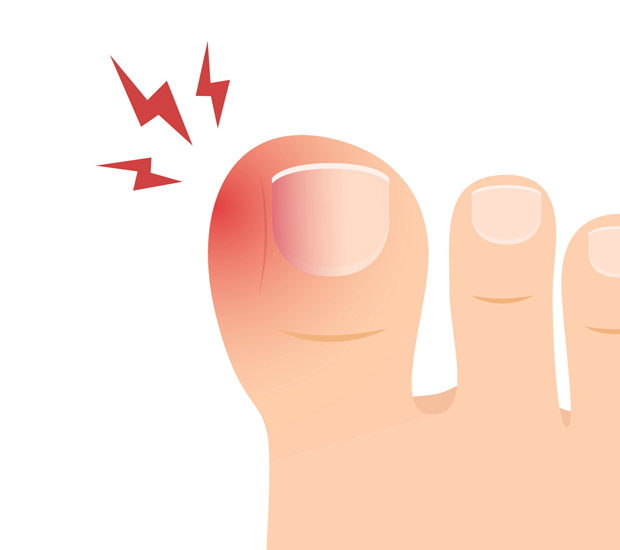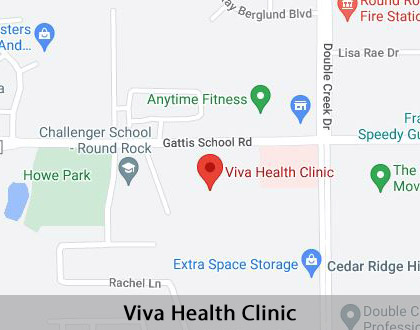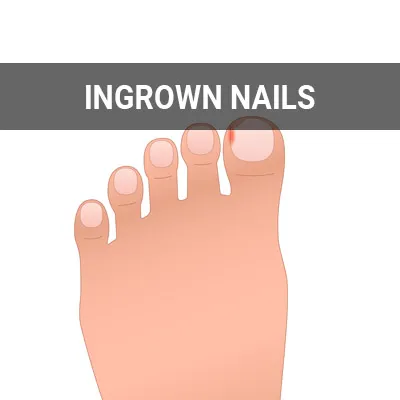Ingrown Toenail Round Rock, TX
When a toenail becomes ingrown, it can be painful and unsightly. An ingrown toenail happens when the corners or edges of one's toenail begin to grow into the skin next to the nail. Home treatment works for many ingrown toenails, but you may need medical intervention in the event of an infection or other complication.
Treatments for ingrown toenails and their complications are available at Viva Health Clinic in Round Rock and the surrounding areas. If an ingrown toenail is causing you trouble, our primary care team can help. Call us today at (512) 243-5872 to schedule an appointment and learn more.
Causes and Symptoms of Ingrown Toenails
Ingrown toenails are likely to develop in the big toe and occur when the skin around the nail grows over the edges of the nail or the edges of the nail grow into the skin. They can be especially common in those who sweat a lot. Improper footwear, including shoes or socks that crowed the toe, is a common cause of this condition. Cutting the toenails too short or at an angle can result in an ingrown toenail as well. Other causes include injury during accidents or sports, improper posture when walking or standing, poor foot hygiene, and genetic factors.
Redness around the toenail is often the first sign a toenail is ingrown. This symptom can be followed by swelling around the nail and pain in the toe along the nail's sides. Infection in the skin around the toenail is a sign the ingrown toenail is getting more serious and may need medical intervention.
“Improper footwear, including shoes or socks that crowed the toe, is a common cause of this condition.”
Ingrown Toenail Prevention
Some causes of ingrown toenails, such as hereditary factors, cannot be helped. However, choosing proper footwear and practicing proper nail trimming are steps a person can take to prevent ingrown toenails. Cutting toenails in a straight line is a crucial first step. Do not cut them too short or at an angle. According to the American College of Foot and Ankle Surgeons, people should be able to put their fingernails under each side and the end of the nail. Avoid wearing shoes that are too tight or too loose, especially during exercise. Both situations put too much pressure on the toes.
There are a few practices people think will help prevent ingrown toenails but do not. Healthcare professionals advise against cutting a notch in the nail. Despite what people believe, this does not help stop the nail from curving downward. Do not trim nail borders repeatedly. Not only does this not change the way the nail grows, but also it can worsen the condition.
“…choosing proper footwear and practicing proper nail trimming are steps a person can take to prevent ingrown toenails.”
What Happens To Ingrown Toenails When Left Untreated
Ingrown toenails that start as minor annoyances can turn into serious problems. If left untreated, an ingrown toenail can become infected. An infection can lead to foot ulcers, blood flow loss to the area, and open sores. Gangrene and MRSA are two major complications that can result from an untreated ingrown toenail.
People with conditions that prevent the toe from getting proper circulation are at extra risk for complications. This is especially true for people with diabetes who tend to have nerve problems in the feet coupled with poor circulation. Healthcare providers advise individuals with diabetes to be proactive in treating ingrown toenails to prevent diabetic foot ulcers and other serious complications.
“People with conditions that prevent the toe from getting proper circulation are at extra risk for complications.”
Check out what others are saying about our primary care practitioner services on Yelp: Ingrown Toenail in Round Rock, TX
Home Remedies
Many ingrown toenails can benefit from home treatment. Some ways to treat ingrown toenails at home include:
- Cotton or waxed floss: People may place cotton or waxed dental floss in the space between your toenail and skin to help move the nail into the right position. It is essential to replace the cotton and floss daily.
- OTC pain relievers: Over-the-counter pain medications such as ibuprofen or acetaminophen may relieve discomfort.
- Soaking in warm wate: People can soak their feet in warm water three to four times a day, keeping their feet dry the rest of the day.
- Wearing sandals: This choice of footwear will keep you from adding pressure to the affected toe.
It is important to remember that if a person has an infected nail, worsening symptoms, or poor circulation due to a condition such as diabetes, they should seek professional medical intervention.
“The over-the-counter pain medications ibuprofen or acetaminophen may relieve discomfort.”
Questions Answered on This Page
Q. What causes an ingrown toenail?
Q. What can a person do to prevent ingrown toenails?
Q. What can happen if an ingrown toenail goes untreated?
Q. How can an ingrown toenail be treated at home?
Q. When should one go to a primary care practitioner to treat an ingrown toenail?
People Also Ask
Q. What are the most common types of ingrown nails?
Treating Ingrown Toenails at a Primary Care Clinic
If an ingrown toenail does not improve with home treatment, patients can get treatment at a primary care clinic. Treatment may involve partially removing the ingrown part of the nail and applying topical ointment or antibiotics in cases of infection. More extensive surgery may be necessary for recurrent ingrown toenails, such as matrixectomy.
People who have diabetes or are experiencing symptoms of infection should seek immediate medical help. Signs of infection include but are not limited to:
- Fluid drainage that is yellow, green, or contains pus
- Foul odor from the infected area
- Pain in the affected area
- Redness and swelling
“Treatment may involve partially removing the ingrown part of the nail and applying topical ointment or antibiotics in cases of infection.”
Frequently Asked Questions
Q. How can I tell if I have an ingrown toenail?
A. An ingrown toenail usually presents as pain or tenderness along the side of the nail. Redness and swelling are two common symptoms. More severe cases can result in infection.
Q. Can an ingrown toenail go away on its own?
A. Ingrown toenails do not typically go away without some sort of intervention. Homecare remedies can cure most cases. However, if the ingrown toenail becomes infected, one should seek medical intervention, especially if a person has diabetes.
Q. How can I treat an ingrown toenail?
A. There are many suggested home remedies for ingrown toenails. Soaking the feet three to four times a day, over-the-counter pain relievers, and placing dental floss or cotton under the edge of the nail are among recommended treatments. Healthcare professionals also recommend footwear that does not put additional pressure on the toe.
Q. How can I prevent ingrown toenails?
A. Avoiding footwear that is either too loose or too tight can help prevent ingrown toenails. Individuals should cut their toenails in a straight line and not curved or at an angle. Do not cut toenails too short.
Q. Should I go to a primary care practitioner for an ingrown toenail?
A. Healthcare professionals advise patients to go to a primary care practitioner or clinic if the nail pain worsens or if the nail shows signs of infection. Bleeding or pus from the affected area is another sign someone should go to primary care practitioner. Individuals who have diabetes, a condition that causes poor circulation, and those with compromised immune systems should seek help sooner.
Start Feeling Better – Visit Us Today
By visiting us as soon as possible, our team can help get you the professional treatment you need. Instead of waiting around and allowing the symptoms to get worse, we can provide you with treatment options.
Definition of Medical Terminology
Call Us Today
If an ingrown toenail is causing you trouble, our primary care team at Viva Health Clinic can help. We can advise you on at-home treatment or provide medical help if needed. Call us today at 512-243-5872 to schedule an appointment or learn more about our services.
Helpful Related Links
- American Journal of Medicine. American Journal of Medicine. 2023
- American Medical Association (AMA). American Medical Association (AMA). 2023
- Journal of the American Podiatric Medical Association. Journal of the American Podiatric Medical Association. 2023
About our business and website security
- Viva Health Clinic was established in 2023.
- We accept the following payment methods: American Express, Cash, Discover, MasterCard, and Visa
- We serve patients from the following counties: Williamson, Travis, McLennan
- We serve patients from the following cities: Pflugerville, Austin, Kyle, Waco, Leander, Cedar Park, Bastrop, Round Rock, Georgetown, Hutto, Liberty Hill, and Taylor
- National Provider Identifier Database (1104428416). View NPI Registry Information
- Norton Safe Web. View Details
- Trend Micro Site Safety Center. View Details
Back to top of Ingrown Toenail










